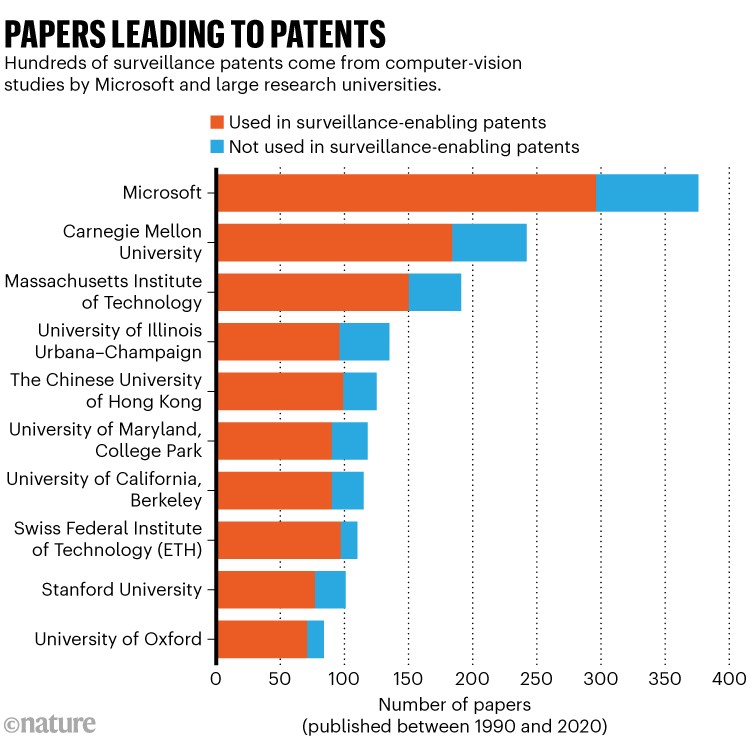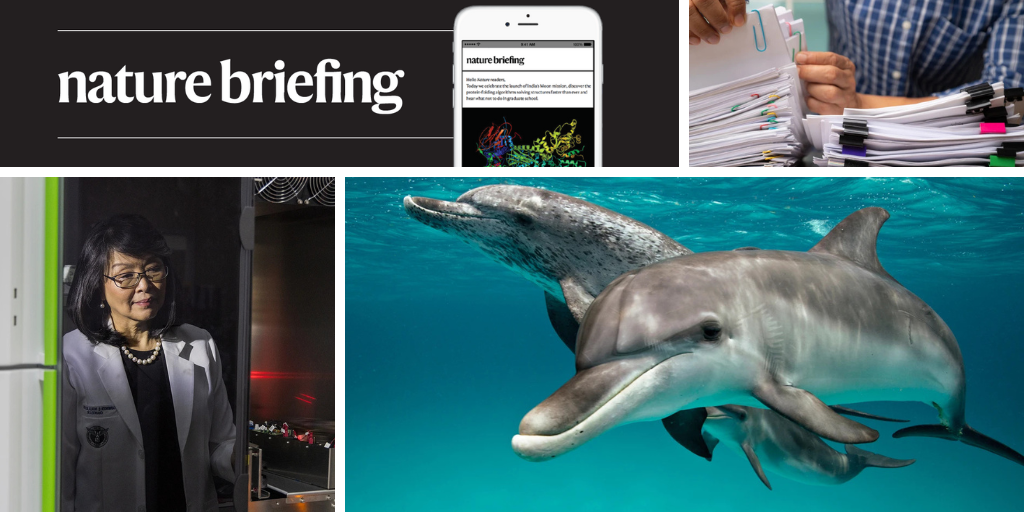You have full access to this article via your institution.
Hello Nature readers, would you like to get this Briefing in your inbox free every day? Sign up here.
Where I work

Carmencita Padilla is an emeritus professor of clinical genetics at the University of the Philippines in Manila.Credit: Chiara Negrello for Nature
In 1996, clinical geneticist Carmencita Padilla launched a pilot study that became the Philippines’ newborn health-screening programme. “After our successful pilot and years of lobbying, government-funded newborn screening became mandated in 2004 — making the Philippines one of the first low- and middle-income countries (LMICs) to do so,” she says. “Our programme has become a model for other countries.” (Nature | 3 min read)
News
The US National Institutes of Health (NIH) has not yet rescinded directives that led to the cancellation of more than 2,400 research projects it funded, NIH staff members say, even though a US judge last week ruled the directives illegal. This has left many confused and worried about the legality of their actions, according to NIH employees who spoke to Nature under condition of anonymity. The agency has begun to reinstate about 900 projects covered by the ruling, but staff have only been told that these actions are “part of the first phase of our compliance with the court’s judgment” and “additional information is forthcoming” in e-mails seen by Nature.
Ecnoglutide — a weight-loss drug that works in a similar way to the blockbuster medication Ozempic — has outperformed a placebo in helping people to lose weight. People taking ecnoglutide lost up to 13.8 kilograms over 48 weeks, whereas people taking a placebo only lost around 200 grams. The drug is one of a growing number of next-generation obesity drugs being developed and tested in China. These include UBT251, a so-called ‘triple agonist’ that mimics the same appetite-suppressing hormone as ecnoglutide, as well as two others involved in fat metabolism and blood-sugar regulation.
Reference: The Lancet Diabetes & Endocrinology paper
Many of the patents born of computer-vision research are for surveillance technologies that can identify and track people. One analysis of 100 computer-vision papers and 100 patents found that 90% of the studies and 86% of the patents that cited those papers involved data relating to imaging humans and their spaces. Computer scientists need to “wake up” and consider the moral implications of their work, says computational biologist Yves Moreau. Almost “the entire field is working on faces and gaits, on detecting people in images, and nobody seems to be saying, ‘Wait, what are we doing here?’” he says.

Source: Ref. 1
Features & opinion
Marine biologist Denise Herzing first swam with wild dolphins in 1985. What was meant to be a six-week research trip turned into a forty-year long career devoted to studying how animals communicate, which she recounts in her book, Is Anyone Listening?. Herzing has earned the right to intuit and speculate about her speciality, writes marine biologist Laela Sayigh in her review, but the book lacks sufficient data and references, which leaves some of her statements unsubstantiated. “However, Herzing’s passion for nature and animals makes for a positive overarching message,” she writes.
Technology developed for studying the stars has far-reaching impact — but the field can go further, write a group including several from the International Astronomical Union’s Office of Astronomy for Development (OAD). “The OAD was founded on a bold premise: that the curiosity, wonder, and technical precision of astronomy can be purposefully directed to address urgent societal needs — from education and health to gender equity and economic opportunity,” they write. The programme has funded 236 projects across 112 countries. For example, the Amanar project linked Sahrawi refugees, displaced by violence from Western Sahara to Algeria, with the cutting-edge astronomy being done in the nearby Canary Islands.
On Friday, Leif Penguinson was hiding in the roots of a Myristica magnifica tree in a swamp forest in Karnataka, India. Did you find the penguin? When you’re ready, here’s the answer.
Thanks for reading,
Flora Graham, senior editor, Nature Briefing
With contributions by Jacob Smith
• Nature Briefing: Careers — insights, advice and award-winning journalism to help you optimize your working life
• Nature Briefing: Microbiology — the most abundant living entities on our planet — microorganisms — and the role they play in health, the environment and food systems
• Nature Briefing: Anthropocene — climate change, biodiversity, sustainability and geoengineering
• Nature Briefing: AI & Robotics — 100% written by humans, of course
• Nature Briefing: Cancer — a weekly newsletter written with cancer researchers in mind
• Nature Briefing: Translational Research — covers biotechnology, drug discovery and pharma


